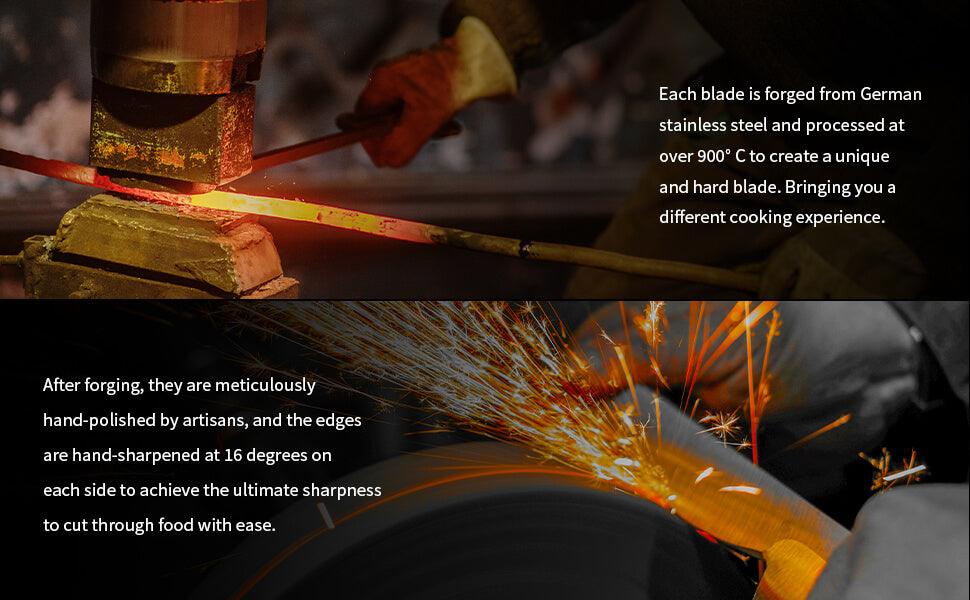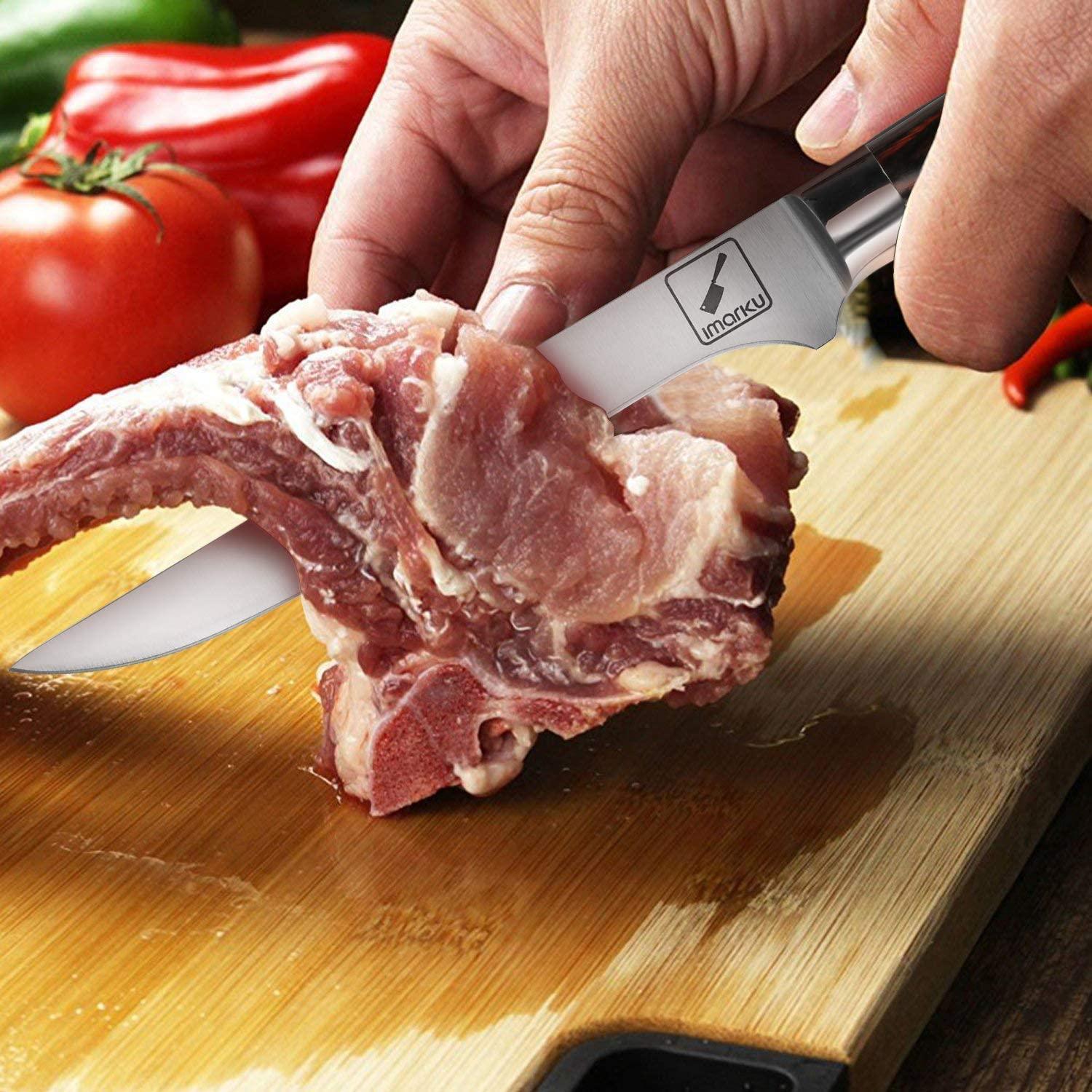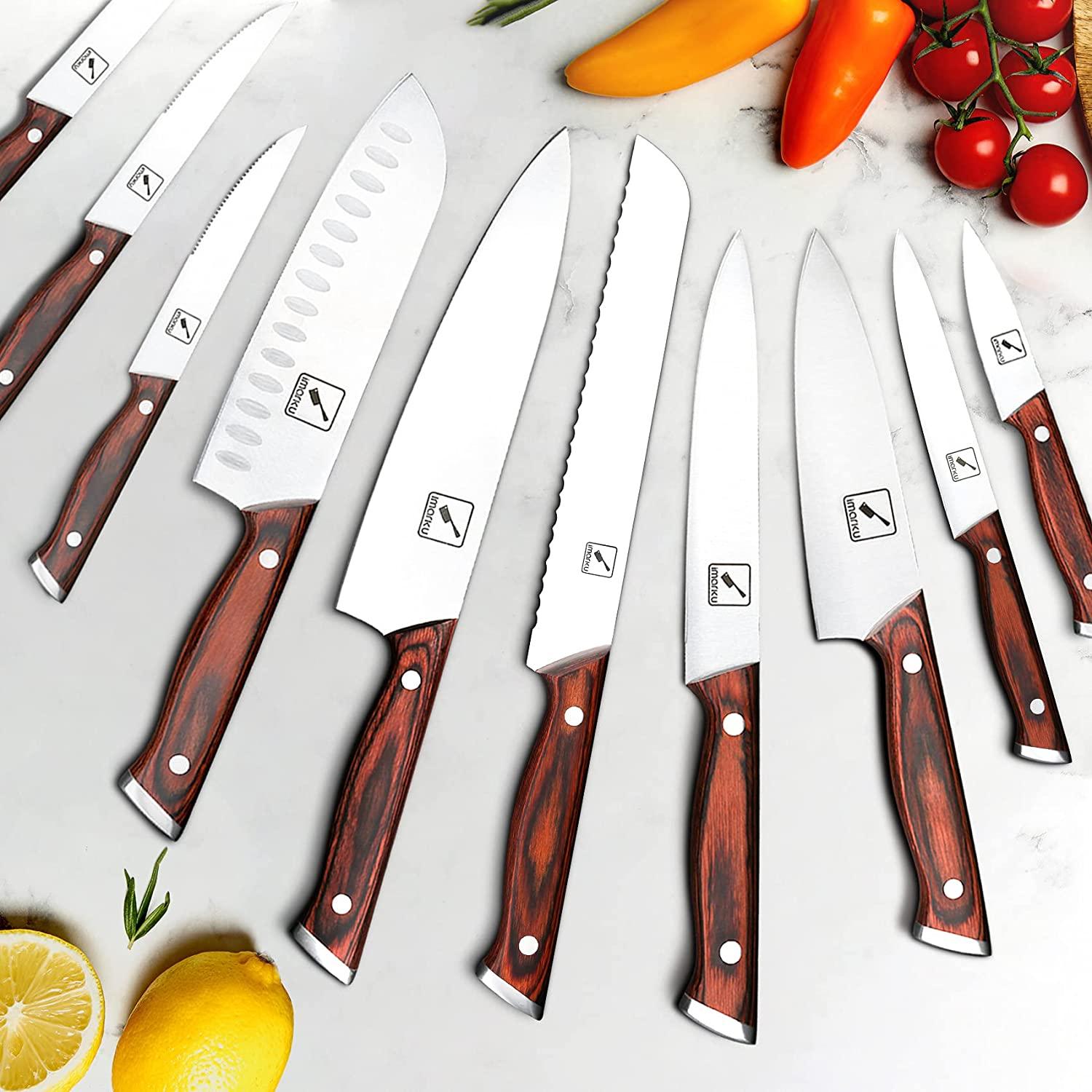TABLE OF CONTENTS
Did it ever cross your mind why one pocket knife costs only $20 while you have to shell out almost $200 for another? Well, most of it is determined by the knife blade material types used for making it. The defining factor in any kitchen blade is the quality of the steel used in the blade.
It's worth noting here that the aspect separating the steel constituted in one knife from another is more palpable than the difference in cost. These include how the kitchen blade would perform and its durability. Here is what you should look for when shopping for kitchen blades and various blade materials.
The two primary elements that comprise steel are carbon and iron, which is why you can never find steel in a periodic table. Carbon is the main element that helps in the conversion of iron to steel. And based on the percentage of carbon, hardness, strength, toughness, and wear-resistance of the knife are decided.
Other elements can also be used in making a specific type of steel, including cobalt, manganese, copper, chromium, nickel, silicon, sulfur, nitrogen, and many others. Each of these elements plays a critical role in defining the traits of the final knife. For instance, chromium is very important in corrosion resistance, and it is very crucial in giving steel its stainlessness.
Carbon Steel Knife
Carbon steel is the most popular and oldest substance used for blading material and historical accounts of 500 AD. High-carbon steel is extremely popular amongst master chefs, bladesmiths, and knife connoisseurs all across the globe to this day. Carbon steel knives contain a high amount of carbon and iron with little or none of the other components.

Pros:
- Carbon steel knives are great for making thin yet very hard blades that can retain their sharpness for a long time.
- Carbon steel knives can last for decades and even be passed from one generation to another with good care and maintenance.
Cons:
- Not dishwasher safe
- Prone to rusting even with a little amount of moisture
- Extremely brittle with a tendency to chip or break when dropped
- Requires specialized tools for sharpening
- Quite pricey
Stainless Steel Knife
Invented with the advent of the 20th century by Harry Bearly, stainless steel soon became the choicest material for making cutlery. This is because stainless steel could seamlessly do away with the two issues most knives faced: rusting and corrosion. And it is achieved by adding a good percentage of chromium to iron.
Pros:
- Low maintenance as it is resistant to rust and corrosion
- Softer material that allows stamping rather than forging
- Great for producing cheap knives
Cons:
- Not much durable if you compare to carbon steel knives
- As it is soft, stainless steel knives require sharpening too often
High Carbon Stainless Steel Knife
A few years later than Harry Brearly invented stainless steel, some also tried reformulating the constituency to have the traits of the knife blade material types mentioned before. It's important to note that high-carbon stainless steel cannot be attributed to a single individual or maker since everyone came up with their own combination for highlighting a feature possessed by most knives. High-carbon stainless steel also contains a high amount of chromium and a host of other materials like Tungsten, Vanadium, and Molybdenum.

Pros:
- Very sharp and highly durable
- Doesn't require much care and maintenance
- Corrosion and rust-resistance
Cons:
- Highly expensive
- High carbon content makes it unsafe for use in dishwasher
Ceramic Blade Knife
Even though ceramic has been in use in the culinary sphere for over a century, it is only recently that kitchen blades were manufactured from this material. This is particularly true in the case of Zirconia which falls in the category of a relatively hard diamond. Chefs still prefer the traditional knife blade material types, and it is more popular amongst home chefs.
Pros:
- Lightweight and very sharp
- Very cheap and easily available
- Easy to clean and can be used in the dishwasher
Cons:
- It is not possible to sharpen
- Quick to chip and brittle
Forged Blades Vs. Stamped Blades
Forged and stamped kitchen knives come with their drawbacks and advantages. If you look at the images of these knives, it won't be easy to differentiate forged knives from stamped knives. Let's delve deeper to understand the comparison better.

Forged blades
The process of forging makes steel much stronger, and the way steel molecules are shaped at the time of forging reduces the flexibility of the blade. Due to this, the knives can maintain the edge for a longer duration.
Moreover, forged cutlery is effortless to sharpen since it's not quite flexible. The blade also won't twist when holding it firmly against the sharpening steel or a whetstone. But their lack of flexibility may pose to be a drawback in some instances. Also, the most significant drawback of forged steel is that everyone may not be able to afford it. But if you can invest in forged blades, you can rest assured that they will last a lifetime.
Stamped Blades
First things first. Stamped blades do not have much reputation among knife blade material types. But that doesn't mean this knife isn't equipped with its own set of advantages. When compared to forged knives, stamped ones are highly affordable. Then, they are made from the same variant of steel that makes forged blades. If you are looking for a complete set of kitchen blades within budget, stamped knives are good to go.
But the biggest disadvantage of a stamped knife is that they do not undergo the process of forging, which adds to the blade's strength. Therefore, these knives are highly flexible and can only maintain their edge for a short time.
Conclusion
There is a sharp difference between people who love to collect kitchen blades and those who possess knowledge of knife blade material types. Choosing your knife for the daily kitchen core can be tricky, and knowing about these popular blade types will certainly help you out.






















Leave a comment
All comments are moderated before being published.
This site is protected by hCaptcha and the hCaptcha Privacy Policy and Terms of Service apply.